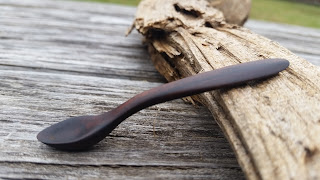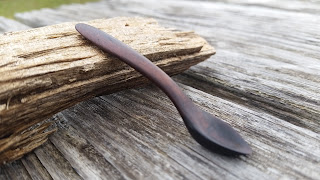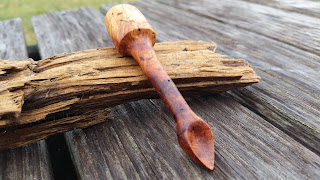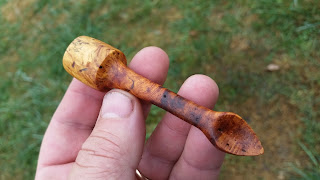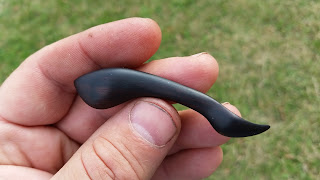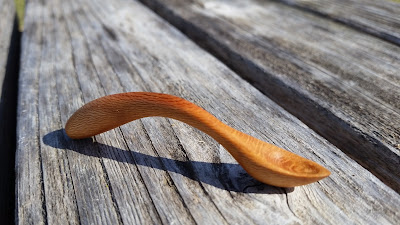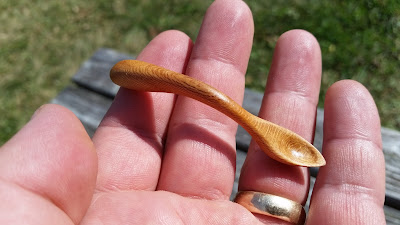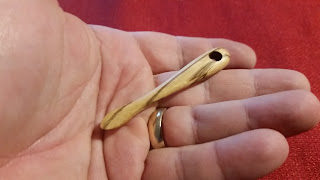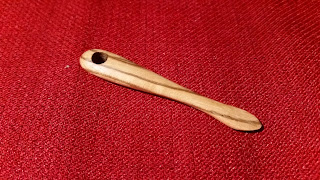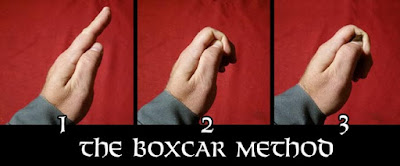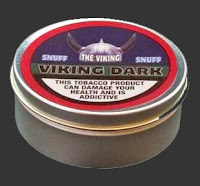
First and foremost - I really enjoy snuff. It is that simple. I just really like it. It makes me happy. It calms me. It brings me into focus.
Secondly, I wanted to build a website that would help other people who enjoy snuff learn more about it. A place I could archive books, videos, and other materials on the topic of snuff tobacco. I enjoy building websites about topics in which I'm interested, and the topic of tobacco and snuff tobacco are interesting to me.
I'm fairly new to snuff. While snuff was at one time the most common way of enjoying tobacco, today it is somewhat obscure. It exists and thrives as an odd sub-culture on the frige of popular culture. For those that might be interested, I thought I would share how I became a snuff-taker.
Back in the early 1980's on my school bus, a kid named Chad had somehow come into possession of a box of snuff tobacco.
It was a strange container, and I don't see anything like it on the market today. The snuff was in a tall thin yellow plastic box with printing on the outside. Chad was pretty excited that he had this forbidden material, and without any idea of how to use it, he snorted huge amounts of the stuff up his nose. His face turned red, his eyes watered and blinked, and he was clearly in pain. He put so much of it up his nose, that brown liquid ran out his nose. Watching him misuse the snuff was a horrifying experience actually, and I have to image that Chad never used snuff again!
Back in 2008, I first tried snuff. I was at a German restaurant in Minneapolis, MN...and after your meal every guest was given a shot of apple schnapps and offered a pinch of Pöschl snuff. If I remember correctly, it was their Ozona cherry or raspberry snuff. They fired two little piles of snuff up my nose using a snapping snuff-board contraption, and I remember the cool of the menthol mixed with the rich fruity flavor. It was great. I went to the restaurant manager and asked to buy a little tin of snuff, and he was happy to sell me a tin of Pöschl cherry snuff.

I didn't become a regular snuff user that night though. Over the years, I would indulge some snuff after a beer or while camping. But, it wasn't a daily or even a weekly activity for me. It was something I did for fun now and again. My tobacco habit was all about cigars, chewing tobacco, and snus...and snuff was just a diversion.
Taking our story forward a number of years, I was in a tobacco store iin 2015 and saw a 30g can of W.E. Garrett's Scotch Sweet snuff on the shelf. It was huge compared to my little tin of Pöschl snuff. I wasn't even aware that American snuff existed, and I was intrigued. I bought the can, opened it, pinched a bit, and sniffed some up both nostrils. American scotch snuffs are a very fine powder and they deliver quite a bit of nicotine. Warmth spread across my face, I felt a warm pleasent burning, and then the scent of the sweet snuff stayed in my nose for several minutes. I was hooked.
Since then, I've tried more American snuffs, English snuffs, German snuffs, Indian Snuffs, and I've become consumed with the whole topic of snuff. I've read books about tobacco and snuff. I've begun participating on snuff online message boards. I've shared what I know so far with friends that are interested in snuff, and I started the Modern Snuff website.
Why did I create this website? Because nasal snuff is the safest, cleanest, and most pleasent ways to enjoy tobacco. Because I believe snuff is a less-dangerous alternative to smoking and chewing tobacco. Because I believe those who discover snuff and are interested in snuff deserve a user-friendly non-commercial on-line resource to further their understanding and enjoyment of snuff.
If you have any suggestions regarding this website or you have resources you believe would make good additions to this website, please contact me at mark@modernsnuff.com and let me know.
Mark Stinson
Modern Snuff Website

















